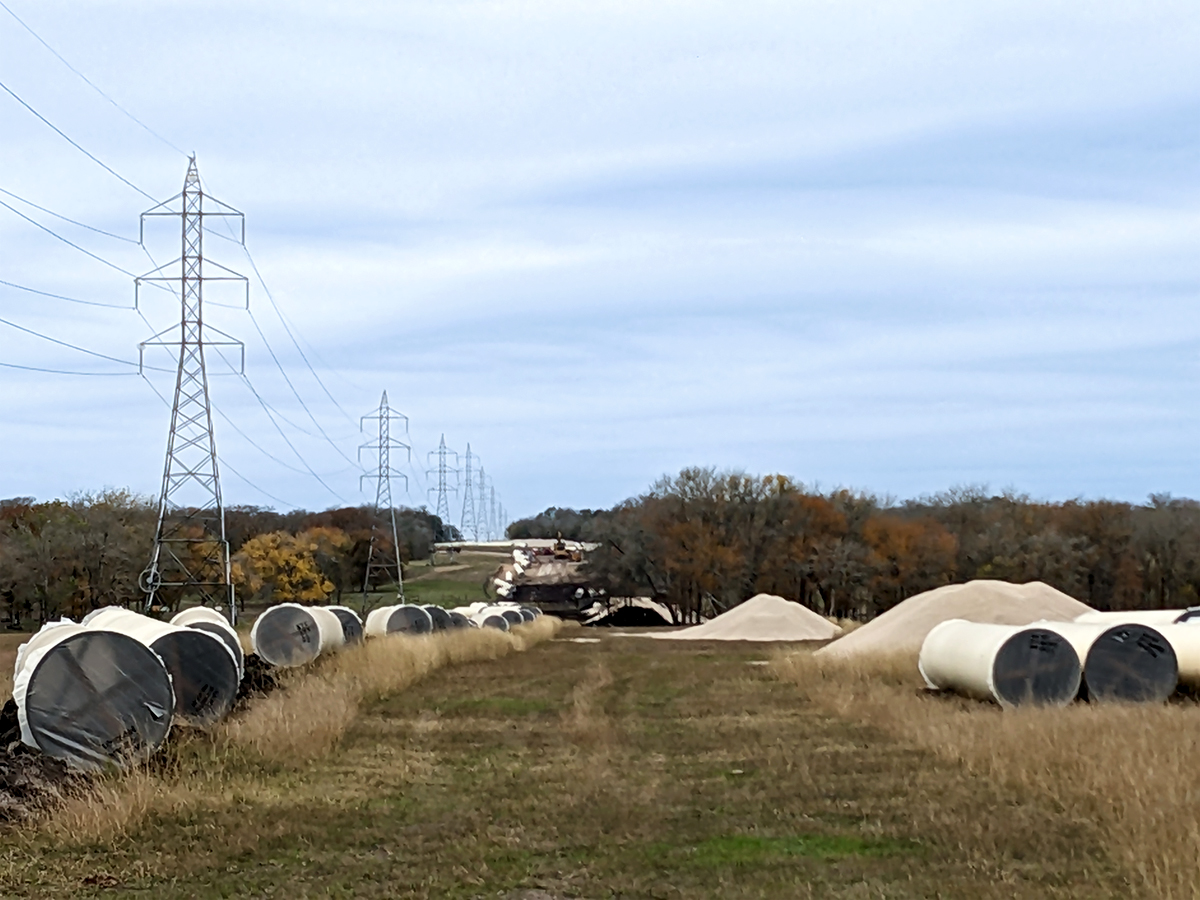Planning a Reliable and Resilient Water Supply Now for the Future
Author: Travis Michel PE and Hunter Hanson PE, Lockwood, Andrews and Newnam, Inc.
As more people are drawn to the Interstate 35 (I-35) corridor between San Antonio and Austin, there is an expectation that resources—like water—will continue to be there. The region has experienced significant population growth and expansion because of job opportunities, a thriving tech industry, and close proximity to both the Alamo City and the Capital City.
In the early 2000s, municipalities in this part of Central Texas recognized the need for an additional water supply. In response to this need, the Alliance Regional Water Authority (ARWA) — formerly Hays Caldwell Public Utility Agency — was established in 2007. ARWA was created by its sponsors, the cities of Buda, Kyle, San Marcos, and the Canyon Regional Water Authority. Since ARWA’s conception, and through its planning efforts, a new groundwater source was envisioned to supplement each stakeholders’ water supply to meet future growth projections. This new supply would diversify each stakeholder’s water supply portfolio and increase their water system’s resiliency to drought.
“We recognized early on the geographic and economic attractiveness of the area. We also knew that people wouldn’t move here without a reliable supply of water to meet demand. Residents in Central Texas rightfully expect water to flow when they turn on the tap,” says Graham Moore, PE, Executive Director of ARWA.
ARWA’s plan for the future is taking shape in the form of a $435 million groundwater transmission system consisting of a new groundwater treatment plant, over 90 miles of water transmission pipelines, a booster pump station, and in-line elevated storage tanks. The Phase 1B system will have the capacity to provide 18 million gallons per day (mgd), expandable to 35 mgd, of treated water to communities in the I-35 corridor. The water is supplied from groundwater wells constructed in the Carrizo-Wilcox aquifer in eastern Caldwell County.

Moore says, “The system got an early start between the cities of Kyle and Buda, Texas, because of Buda’s more immediate need to supplement its water supply. Lockwood, Andrews and Newnam, Inc. (LAN) provided engineering design for 28,000 feet of 24-inch ductile iron water line — called Phase 1A — which allows the City of Kyle and the City of San Marcos to share their excess water with Buda until the entirety of the ARWA system is complete. Phase 1A was completed in 2020.”

Now that Phase 1A has been completed, construction progress is well underway for Phase 1B, which consists of the remaining buildout of ARWA’s initial transmission system. LAN provided design services for the Phase 1B Treated Pipeline Segment A, which includes approximately 17 miles of 48-inch steel pipeline.
With the rural nature of the Segment A pipeline, the majority of the 17-mile project was able to be installed with traditional open cut construction. Sixteen (16) distinct trenchless crossings totaling over 1,600 linear feet were included in the project to cross state and county roadways, as well as significant creek crossings. The most difficult crossing in the project was Plum Creek. While multiple trenchless construction methods were considered and evaluated, installation by a microtunnel boring machine was specified due to the size of the tunnel required, groundwater levels, and the expected soil types that would be encountered at the 50-feet deep crossing.

Another unique element of the pipeline design for the Segment A project was developing a uniform design approach at creek crossings. The project area is known to have a history of erosion and scour along some of the creeks, evidenced by 29 National Resource Conservation Soil (NRCS) Sites established in the project area. (NRCS, which is part of the US Department of Agriculture, provides resources for soil and water conservation.) The design team evaluated 32 creek crossings along the pipeline alignment, accounting for scouring in the creeks, which could expose the pipeline and appurtenances in the future. The US Bureau of Reclamation method was the primary scour analysis tool utilized in the project. It considers existing stream hydraulics, geotechnical information, and the review of historical aerial imagery to provide an empirical prediction of the future scouring of the creek. With this analysis completed, the pipeline can be placed at the proper depth below the creek to reduce the risk of scour, which could impact the pipe’s integrity over time.

LAN has worked closely with ARWA to implement cost-effective measures into the Segment A design when viable. The most significant of which was in a detailed route analysis performed in the preliminary design phase. Typically, cost is directly related to the physical length of the project. Thus, reducing the overall pipeline length would have the biggest impact in reducing the overall project cost. The original route concept was 20.9 miles. By identifying a shorter route using cross-country segments, the pipeline alignment was pared down to 17 miles. Shaving nearly four miles equated to approximately 20% reduction of the overall cost. The improved route also meant fewer easements had to be acquired—only 40 compared to the previously planned 90 easements. The associated savings is estimated to be more than $11 million.
Other value-engineering decisions made before the project began construction included coordination with TxDOT to allow excavation for trenchless construction shafts within the right-of-way. The reduction in tunnel lengths, coupled with recommended improvements to standard details and design variance approvals from Texas Commission on Environmental Quality (TCEQ), totaled over $200 thousand in savings.
Once a contractor was identified through a competitive sealed proposal procurement method, LAN supported ARWA in value-engineering negotiations with the contractor, which resulted in more than $1 million in additional savings. Some of these items included allowing an alternate pipe bedding material which was more economical, allowing mulching of brush in lieu of haul-off, and reducing the specified polyurethane coating thickness to match the minimum recommended thickness by AWWA standards.
The Segment A project design allowed for steel, bar-wrapped concrete steel cylinder, or ductile iron pipe materials. Ultimately the selected pipe material was steel, manufactured to AWWA C200 standards, with polyurethane coating and cement mortar lining. Cathodic protection was designed to prevent corrosion of the steel pipe over time. Due to the availability of overhead power in the project area, as well as corrosion risks from various soil types, an impressed current cathodic protection system was designed for a portion of the pipeline. The remainder of the project is protected by a galvanic (sacrificial) cathodic protection system.

ARWA Executive Director Moore, adds, “Funding for the Phase 1B system is provided by the Texas Water Development Board’s State Water Implementation Fund for Texas (SWIFT). The SWIFT program provides low-interest loans to fund water-related infrastructure supply projects and initiatives throughout the state. Utilizing this funding source saves stakeholders more than $20 million in debt service, as compared to other financing options.”
Now and in the future, ARWA stakeholders are benefiting from thoughtful and methodical planning ensuring a reliable and resilient water supply. The Phase 1B system is expected to begin delivering water in 2024.

Travis Michel PE, is a Senior Associate and Team Leader with Lockwood, Andrews and Newnam, Inc. He has more than 20 years of experience in analysis, design, project management and construction management of water systems and other municipal infrastructure.
Hunter Hanson PE, is a Project Engineer with Lockwood, Andrews and Newnam, Inc. He has eight years of experience in the planning, design, and construction of large-diameter pipelines. He has been involved in over 100 miles of pipeline projects up to 120-inch diameter.
Photo(s) courtesy of: LAN


